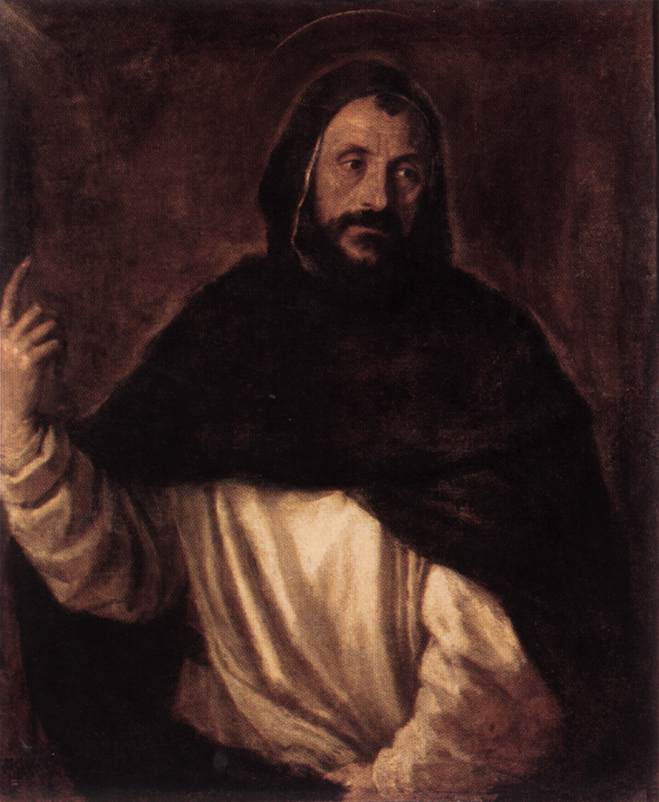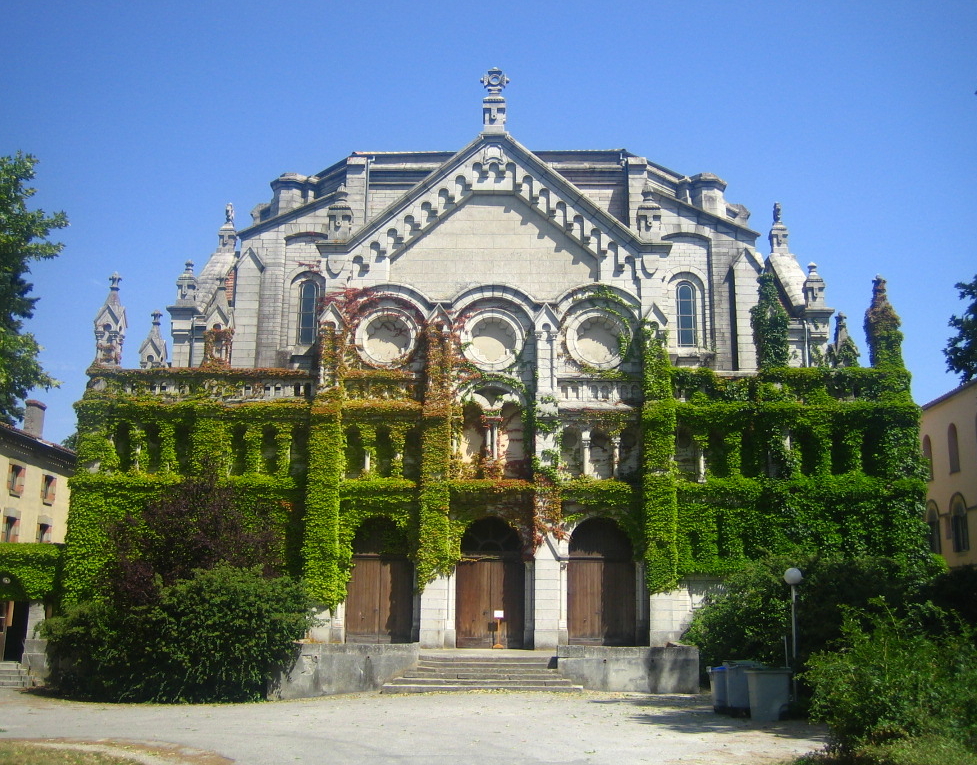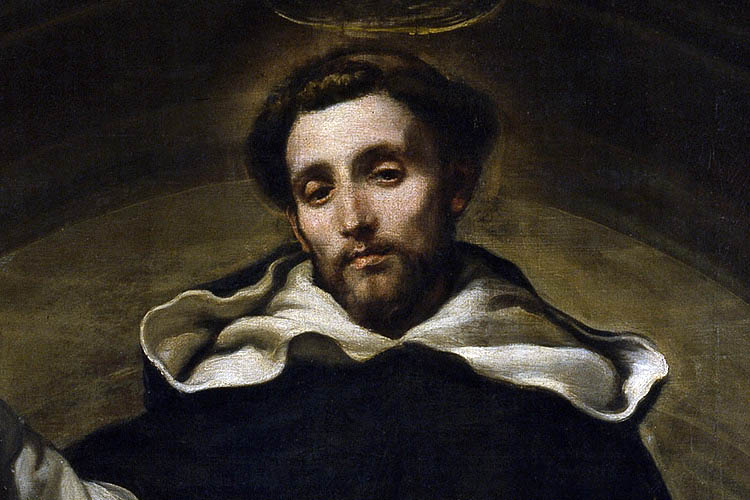“Arm yourself with prayer, rather than a sword; wear humility rather than fine clothes.”
Born in Spain in 1170, his parents were members of the Spanish nobility and related to the ruling family. His mother was a holy woman in her own right.
His mother had a dream of a dog leaping from her womb with a torch in its mouth which “seemed to set the earth on fire.” His parents named him Dominic, a play on the words Domini Canis, meaning the Lord’s dog in Latin.
In his education he concentrated on theology and the arts and was an exemplary student. A famine struct and he sold all that he had, including his furniture and clothes which he used to buy food for the poor.
On two other occasions, he attempted to sell himself into slavery to the Moors to obtain the freedom of others. He joined a Benedictine order and became the superior in 1201. Along with his bishop they were tasked with a journeyed to Denmark, Spain and finally Rome where the Bishop wanted to renounce his position and convert nonbelievers. The Pope instead wished for both of them to travel to Southern France to convert heretics to the true faith.
Albigensian heresy was flourishing and was so dangerous that it even praised the suicide of its members. Little headway was made by fellow Benedictines in their combat against it because they had turned worldly. Dominic and the Bishop were austere and had self-discipline which appealed to the heretics who had been deceived. They were threatened with violence by the rest. Still, they traveled throughout the region, preaching and converting many back to the true faith.
To secure the gains made, with the help of the French Nobles, Dominic established a convent which would become the first Dominican house and the monastery itself still remains. They recently celebrated their 800th anniversary.
French nobility rose against the heretics and Dominic appealed for mercy. He followed the armies, reconciling and aiding the survivors.
In accordance with legend, Dominic received the Rosary during a period of prayer at the abbey in Prouille in 1214 from an apparition of the Virgin Mary, Mother of our Lord. The Marian Rosary became popular following this event suggesting the legend to be true.
He became famous and prominent religious figures petitioned for him to be made bishop which he refused 3 times and stayed steadfast to his mission and in 1215 was granted permission to form his own religious order.
In 1221, he took ill with a fever and asked to be laid on the ground, refusing a bed as usual. He made a last confession and a will, then passed away on August 6th.
He is the patron saint of astronomers, astronomy, falsely accused people, the Dominican Republic, Santo Domingo of the Dominican Republic, Valletta and Birgu of Malta, and Managua of Nicaragua.
His feast day is August 8.
For God’s Glory.


